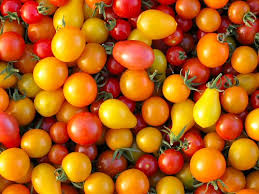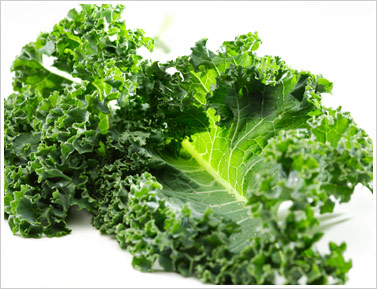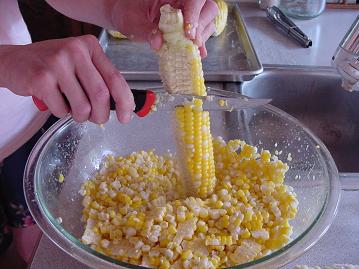Apples

- According to the EWG report; Grocery Store Apples consistently rank near the top of the annual dirty dozen list. More than
40 different pesticides have been detected on apples, because of the sprays farmers use to prevent fungus and insects. You can expect to find pesticide residue in apple juice and apple sauce including baby foods.
Celery
-Another food on the DD List is Celery. It's a good one to remember since it doesn't fit the 3 main categories of foods with the highest pesticide residue (tree fruit, berries & leafy greens). USDA tests have found MORE than
60 different pesticides on celery.
Cherry Tomatoes

- Tomatoes have been in for some bad press in the past few years with exposes like
Tomatoland highlighting the environmental, human and culinary costs of the modern tomato. Cherry tomatoes show up on the EWG's list of Dirty Dozen foods. If you can't grow your own, buy from a farmer's market or local gardner.
Cucumbers
- Making the 2013 list of foods with highest pesticide residue: Cucumbers which have been laced with as many as
35 different pesticides that remain on the skin even when you are ready to use them for salad.
Grapes
- Imported grapes can have more than
30 pesticides on them. Raisins, not surprisingly, also have
high pesticide residue tests. What about wine?
Hot Peppers
- Grow your own or shop local; most are pesticide laced.
Nectarines
- Imported, are among the most highly contaminated tree fruits. Domestic nectarines don't test with as much, but overall
33 pesticides have been detected on nectarines.
Peaches

- Another regular on the DD list. Peaches can be found with more than
60 different pesticides, and nearly as many in
single serving packs; far fewer in
canned peaches. Again, buy organic or local or use safer alternatives like Watermelon, tangerines, oranges and grapefruit.
Potatoes
- I don't eat alot of these but can you believe more than
35 pesticides have been detected on potatoes? For some reason, almost non on Sweet potatoes.
Strawberries
- Strawberries are always on the DD list; because big farmers spray for fungus. Nearly
60 different pesticides have been found on strawberries, though fewer are found on
frozen strawberries.
Spinach
- The leader in leafy green pesticide residue is Spinach (bummer) ... nearly
50 different pesticides.
Frozen has nearly as many;
canned a few less.
Sweet Bell Peppers
- Usually makes the DD list because it boasts
50 different pesticides. Okay, easy one to grow here in Southern Utah - do it!
Kale

- A superfood. A hardy, naturally pest resistant plant. Quite puzzling why it tests high for pesticide residue. Grow your own, find a farmer's market - buy local.
Collard Greens
- Like kale, always on the annual DD list. Tops out at more than
45 different pesticides.
Zucchini
- The upside to this one is every gardner you know has zucchini - don't turn them down this year. Get them out of a friend's garden or grow your own!
Lettuce
- In that leafy green category, lettuce often makes the DD list with the most pesticides -
50 to be exact.
Blueberries

- So sad about this one ... Blueberries have more than
50 pesticides detected as residue on them. Frozen blueberries have somewhat less. Also beware of cranberries and cherries - they are often quite contaminated as well. If you can't find organic berries - go with bananas.
 NOTE:
NOTE: The latest studies say Organic "labeled" foods on a whole carry 30% less pesticide residue than non-organic and don't show a significant difference in nutritional level. Another reason to grow your own ... or at the very least know WHERE it's grown. Even if farmer's are NOT organic, most smaller farmers are growing in a sustainable fashion which usually means they are not using pesticides. Ask to find out.
ALSO: Many of the foods listed above are the "go-to" foods for children ... please let your families know what to watch out for. Stay current - be careful - follow your heart!
And as always check
www.ichowlocal.com ... more growers and foods being added daily.
*
www.thedailygreen.com
*
www.whatsonmyfood.org
*
http://www.huffingtonpost.com/2013/04/22/dirty-dozen-foods-list-2013_n_3132788.html






















